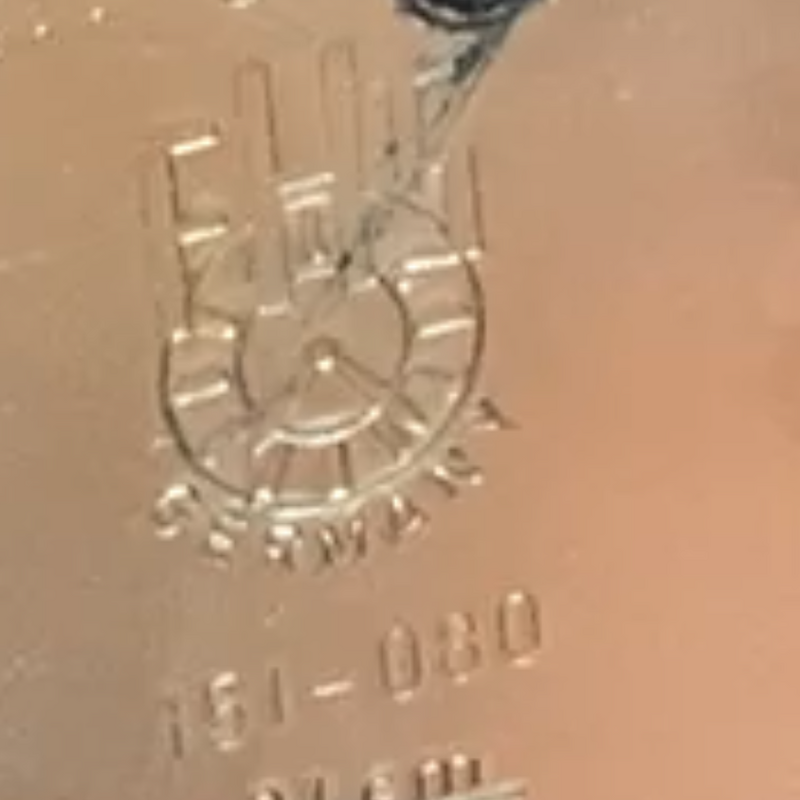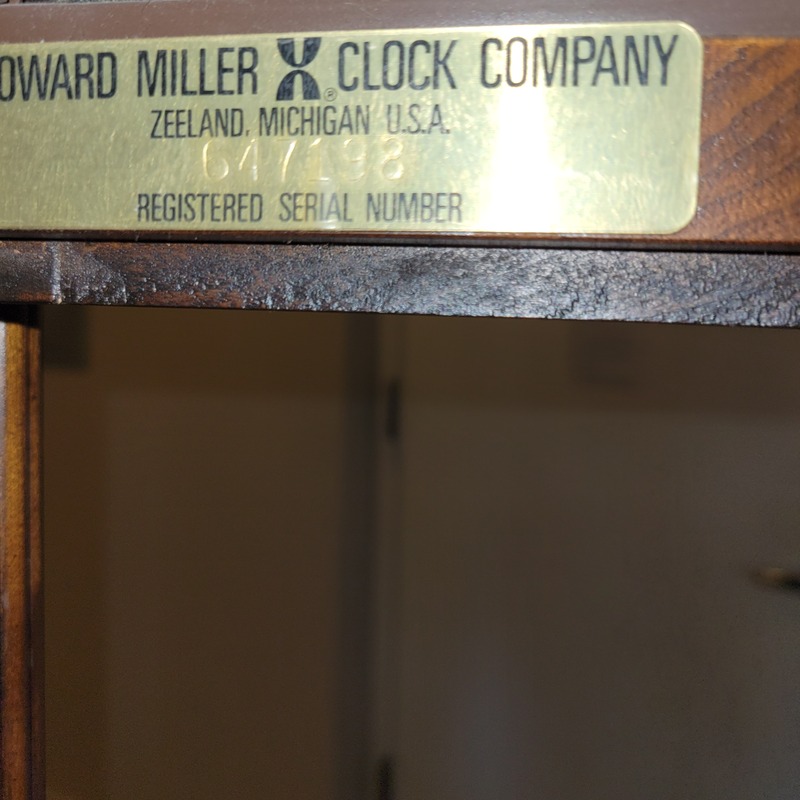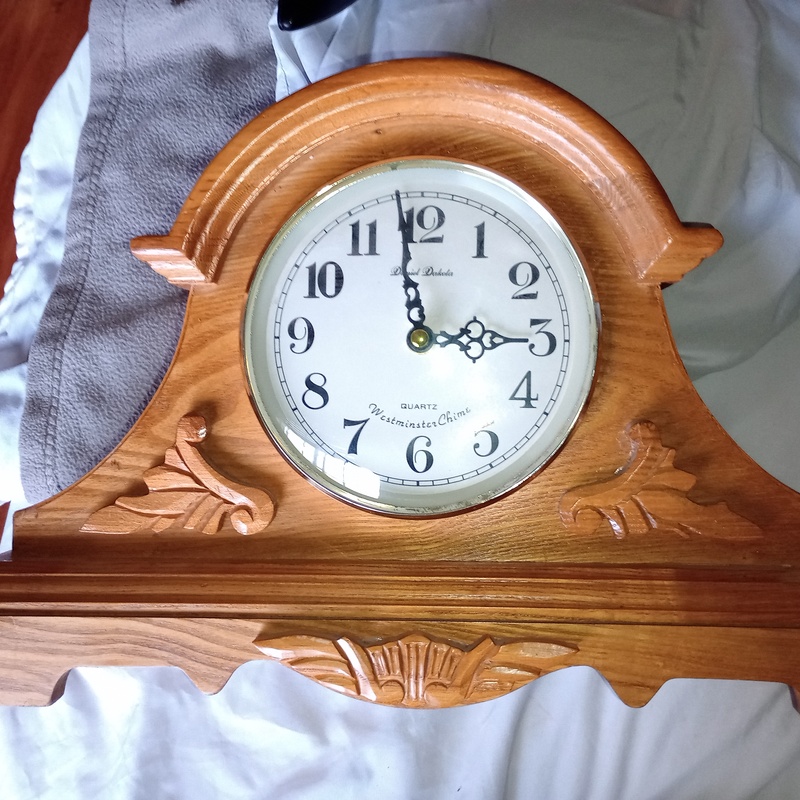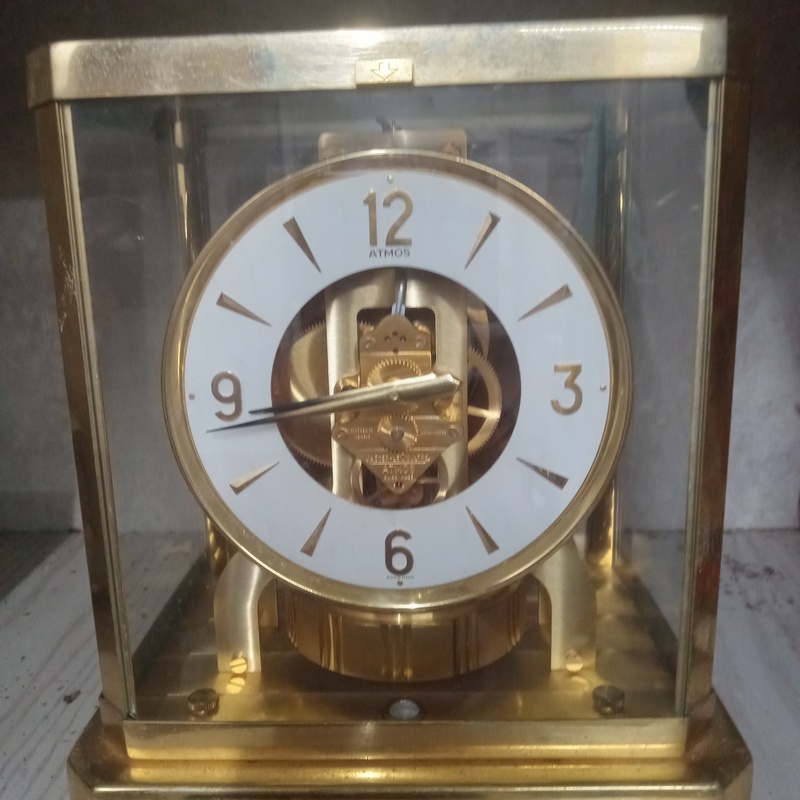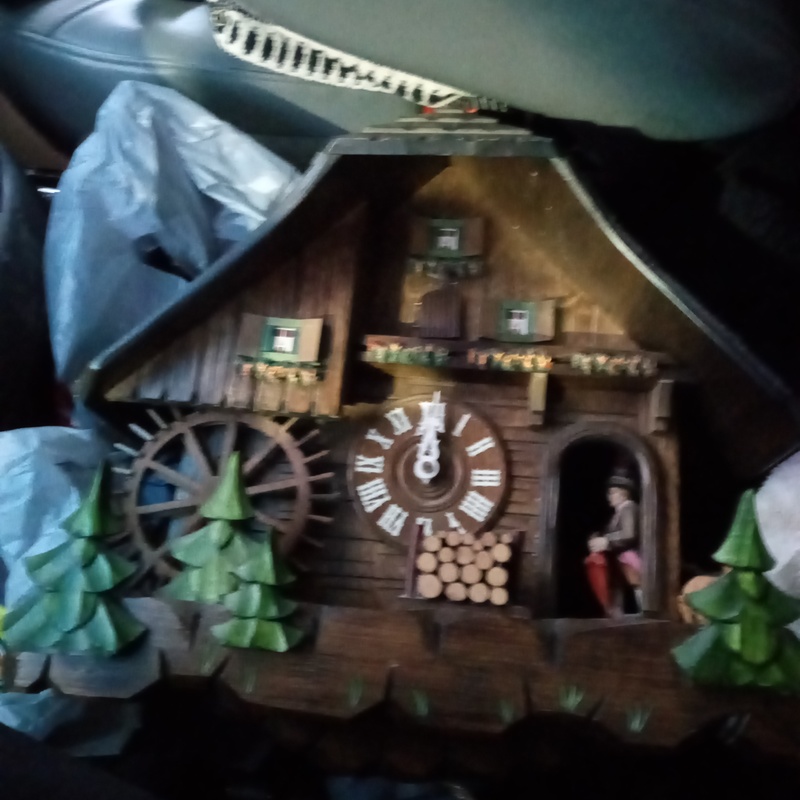
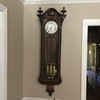
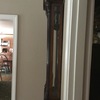
Antique clock
The clock is 48” from finial to finial, 16” wide, 5 1/2” deep. The case is hard wood and glass.
The item belonged to my mother in law and passed to my late wife. My mother in law was owned it since I first met my wife 47 years ago. I do not know where she acquired it
Inherited
Yes


Hello Steven,
Thank you for sending in this fine wall clock to mearto.com for an appraisal. I shall try to help you with that tonight.
TITLE:
Walnut and ebonized walnut, three weight, eight day time, strike and quarterly chiming, “Transitional” Viennese wall clock, dial signed ‘J. Weineck’ (parts not fully legible), Wien (Vienna), Austria, circa 1860-1865.
DESCRIPTION:
Case: 48” x 16” x 5.5” transitional era wall clock of walnut, parts ebonized, with a concave molded ‘Napoleon hat’ pediment surmounted by two laterally placed wide urn and spire finials. The tympanum contains a large concentric oval simulating a medallion. A horizontal cornice sits above the rectangular glazed dial door, the glass overlying the dial with an arched or domed shape at the top. The dial door has ebonized triangular pyramidal shaped spandrels at the top and th door is flanked by chamfered case corners with full length ebonized columns with corbel-shaped capitals and bases. The trim at the edge of the door is also ebonized. {The ebonized wooden cases were part of the transitional era in Vienna regulator production (1860-1870).}
Below the door is a sharply tapered and rounded pedestal base in walnut with a darker teardrop finial at the base of the pedestal. The sides of the case are glazed.
Dial: This is a white porcelain two-piece dial enclosed by a gilt brass medallion decorated bezel. There are bold Roman hours with a closed minute track to the outside, a brass ring to the inside separates the hour chapter ring from the dial center with its three winding apertures, finely carved fenestrated Viennese hands (original) and the upper dial enameled, partly legible, ‘J Weineck, Wien’. (I cannot be certain of this but have gone by the clarity of the WEI and K as last letter.) Johann Georg Weineck Junior followed his father in business in Baden, Germany and may have spent some years in Vienna working there as well. . .
Movement: Not shown but would be a brass rectilinear movement with its seatboard which slides onto a shelf inside the case and it secured with thumb screws. This would be a three-weight powered movement with brass canister weights, plain on the outside rather than engraved or embossed, and having brass four arm pulleys while the pendulum is ebonized wood with a brass covered bob over a zinc backing. There is an anchor escapement with rack and snail striking. Striking is most likely on a coiled metal gong either attached to the backboard or to a shaped brass base part of a post at the back of the movement. These clocks are mostly of eight-day duration and chime quarterly.
Condition: Case – In very good condition with no major damage and has classic elongated lines and fine proportions. Dial – Also typical of the transitional era with two-part dial. The signature may have been partially gone over at some point. Movement – Not seen but assumed original to this case, genuine and fully functional.
HISTORY of the Vienna Regulator:
The original Vienna Regulators were hand made between 1815 and 1845 in Austria. These were weight driven wall clocks and superb timekeepers. They were time only wall clocks and did not strike. Those made after 1850 tended to have more ornately carved cases, with added pillars and teardrop finials. The elegantly crafted dial hands were replaced by ornate machine stamped steel hands. The original one-piece enamel dial was replaced by two pieces with a round brass ring between the two sections.
Far more common than these Viennese clocks are the later German copies. These were mass produced mainly in the Black Forest region of southern Germany. One of the characteristics of these clocks is that although the small round seconds dial is marked for sixty seconds, frequently the seconds hand completed the full circle in 45 seconds. Weights gradually gave way, after about 1880, to spring driven and less accurate timekeepers. Competition for market share was intense in Germany around the turn of the 20th century and that led to cheapening of the movements. The earliest of the first period Vienna regulators were in simple linear cases, either standing on the floor or hung on a wall. They were mainly made of mahogany or walnut. That early period ran from 1780-1860. Those clocks are highly valued by collectors the world over, and rarely seen in the marketplace. The second phase, called the Transitional or Serpentine ran from circa 1860-1870. During this period, we see the development of the serpentine or curved cases. There was more ornamentation on top and at the base of the clocks which were mostly wall clocks, although a few continued to be made as floor examples. The weights were simple undecorated brass. The large brass pendulum bob was backed by zinc. The coiled gong was used rather than bells. The dials were two pieces with or without a seconds bit. The seconds, when present actually measured sixty beats per minute. Case graining was put into use. Woods were mahogany, walnut or oak. The final period runs from 1870-1930. The early years were the Aldeutsch or Second Baroque styles (1880-1900) and the 20th century component involved mostly industrial factory-made clocks, and mainly from Germany. One sees plain, engraved, etched or embossed weights and bobs. There might be brass trim on the wooden pendulum rod. Elaborate and often grotesque ornamentation was used. The spring driven clocks dominated after 1900. The use of finials, shells, spindles, and generally all sorts of combinations of case styles were seen during this period. Westminster chimes came into use about 1900. After 1900 the German clock factories, mainly in the Black Forest region exported huge numbers of clocks to both England and America.
PRICING:
Looking at comparables of these mid-19th century transitional era wall clocks over these past few years and noting the condition and age of yours leads me to believe that the fair market value for your example in today’s weakened market would range from $1200-$1500 with a retail value about twice that. I hope that has provided some help to you in placing this fine wall clock in time, place and value. Again, I cannot be certain about the maker but it is as close as I can get using the text 'Viennese Clockmakers' by F.H. Van Weijdom Claterboss.
My best,
David

